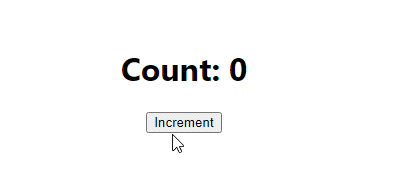In this short article, we will discover why to utilize React Hooks Rather of Classes in ReactJS
React hooks are functions included React 16.8 that enable practical elements to hold state, handle lifecycle occasions, and utilize other React functions that were formerly solely readily available in class-based elements. Hooks make it simpler to establish multiple-use and modular code in a more clear and uncomplicated way.
Class-based elements in React are an alternate method to produce multiple-use UI elements utilizing JavaScript classes. They are specified by extending React. Element class and executing techniques such as ‘ render()’ to specify the part’s UI. Class-based elements have their own state and lifecycle strategies.
Syntax:
import React, {useState} from 'respond';
const MyComponent = () => > {
const [state, setState] = useState( initialValue);
// ...
};
Benefits of Utilizing Hooks over Classes:
- Readability and simpleness In contrast to class-based elements, hooks use an easier and much shorter syntax. Making use of hooks makes it possible for the development of practical elements without the requirement for classes, making the code easier to check out and understand. Hooks produce much better code by getting rid of the trouble of dealing with the ‘ this’ keyword, builder, and lifecycle functions.
- Code Reusability By enabling you to extract and reuse reasoning throughout numerous elements, hooks enhance code reuse. Without utilizing higher-order elements or render homes, you might separate and engage with stateful habits with customized hooks.
- More Efficient Management With making use of hooks, you might more exactly group and handle associated code. To deal with unique issues separately, such as state management, adverse effects, and context, you can utilize numerous hooks within a single part.
- Avoiding problems connected with classes Making use of classes in React elements may lead to uncertain scenarios relating to the binding of functions, making use of lifecycle techniques, and efficiency enhancements. These issues are solved with hooks, which use an easier technique of dealing with state and impacts.
- Enhancing Efficiency Hooks make it simpler to enhance efficiency. Using hooks like ‘ useCallback’ and ‘ useMemo’ permits you to cache functions and worths, minimizing the requirement for additional rendering versions and boosting part efficiency.
- Versatility in the Future React has actually been promoting hooks as the main technique of composing elements in the previous couple of years. The hooks method is the one that the React group suggests for developing elements in React given that they are buying boosting and increasing their abilities. Utilizing hooks assurances compatibility with upcoming React releases.
- Example: In this example, we have actually utilized the useState hook to control the state.
Javascript
|
|
Output:

Incrementing Count utilizing UseState Hook
Example: In this example, we have actually controlled the state with making use of Class.
Javascript
|
|
Output:

Utilizing Class
Distinctions in between React Hooks and Classes:
|
Syntax |
Hooks utilize routine JavaScript functions |
Classes utilize the class syntax with ' |
|
State Management |
The useState hook is utilized with hooks to specify and upgrade state variables. |
In classes, the state is specified utilizing the ' this.state ' item and upgraded with ' this.setState() ' |
|
Lifecycle Techniques |
To deal with part lifecycle occasions, classes include lifecycle techniques such as ' componentDidMount ', ' componentDidUpdate ', and ' componentWillUnmount ' |
The ' useEffect ' hook in hooks is utilized to deal with associated lifecycle occasions. |
|
Code Company |
With classes, pertinent reasoning and state are regularly distributed over lots of lifecycle techniques and class techniques. |
Hooks enable you to group together pertinent reasoning by breaking it into smaller sized customized hooks. |
|
Reusability |
Classes can be recycled by utilizing higher-order elements (HOCs) or render homes. |
Hooks motivate reuse by enabling you to develop customized hooks that encapsulate a group of associated performances. |
|
Knowing Curve |
React has actually had classes given that its early variations, for that reason there are more training products and code samples to pick from. |
On the other side, hooks, which entered into usage later on, use an easier and more rational method to composing elements. |
Conclusion: React hooks make part advancement simpler while likewise enhancing readability and company. They enable code reuse, enhance efficiency, and work with practical shows. Hooks supply clearer and more maintainable code by minimizing class-related problems and making sure future compatibility.